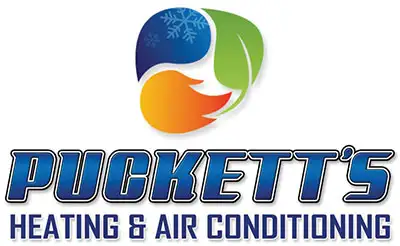When the warmer days of spring arrive in Easton, the last thing you want is an air conditioner that refuses to turn on. This can create frustration and discomfort, leaving homeowners seeking quick solutions in order to restore comfort to their homes. Addressing this issue promptly is important, not just for immediate relief, but also for ensuring your AC system is well-prepared for the hot summer days ahead.
While it might feel daunting initially, several common-sense solutions might resolve the problem. From simple checks to ensuring everything is set correctly, identifying and resolving common issues can help get your AC back on track. This guide explores practical steps homeowners can take before deciding to call in professional help, ensuring your home remains a comfortable sanctuary as temperatures climb.
Check the Thermostat
One of the first things to assess when your air conditioner won’t start is the thermostat. This small device plays a significant role in controlling the cooling system. If it’s not set correctly, your AC might not know it needs to start working.
– Set to Cool Mode: Ensure the thermostat is set to “Cool” mode. Sometimes, it can be mistakenly left on “Off” or “Heat,” especially if you recently changed settings.
– Temperature Setting: Verify the temperature setting is lower than the current room temperature. Otherwise, the AC won’t get the signal to kick in.
– Battery Check: Check the thermostat’s batteries. If they’re weak or dead, replace them immediately. Battery-powered thermostats can behave unpredictably with depleted batteries.
– Calibration: If the thermostat appears inaccurate, it may need recalibration. This ensures it reads and sends signals correctly to the AC unit. If recalibration seems complex, contacting professionals can help ensure it functions optimally.
Taking these steps can often resolve issues linked to thermostat settings, leading to quick relief.
Inspect the Power Supply
The power supply is another common area where problems can arise. Even if everything else is in working order, a lack of power can prevent your AC from turning on. Here’s what to check:
– Circuit Breaker: Head to your home’s main electrical panel and see if the circuit breaker for the AC has tripped. If it has, flip it back to the “on” position. Frequent tripping might signal a bigger issue where professional help is recommended.
– Fuses: In older homes, there might be fuses instead of breakers. Check for any signs of a blown fuse and replace it if necessary.
– Power Switch: Make sure the power switch near the indoor air handler is in the “on” position. This switch can sometimes be turned off accidentally.
These checks are straightforward but can often make the difference in getting your AC operational again. If problems persist after ensuring correct power flow, it might be time to call in our professionals to diagnose deeper electrical issues.
Examine the Air Filter
A clogged air filter is a common culprit when an air conditioner refuses to turn on. These filters can easily become blocked with dust and debris, which restricts airflow and puts strain on the system. This can trigger safety features that shut the system down to prevent damage.
To tackle this issue, follow these steps:
1. Turn off the power to the unit for safety.
2. Locate the air filter, typically found near the return air duct or inside the unit.
3. Remove the filter and inspect it for dirt and debris.
4. If it looks dirty, replace it with a new one. Make sure the replacement filter matches your system’s specifications.
Regularly changing the air filter not only helps maintain system efficiency but also ensures better air quality inside your home. Scheduling regular maintenance by our professionals can provide peace of mind, ensuring that the system remains in good condition and functions efficiently.
Assess the Outdoor Unit
The outdoor unit of an air conditioning system is often exposed to environmental elements, which can affect its performance. Accumulated debris like leaves or dirt, overgrown vegetation, or even physical damage can disrupt airflow or damage components.
To prevent these issues:
– Clear Debris: Regularly check around the unit and clear any debris or obstructions.
– Trim Vegetation: Ensure there is at least a two-foot clearance around the unit for proper airflow.
– Inspect for Damage: Look for visible signs of damage on the unit, such as bent fins or damaged panels.
Routine inspections ensure that your AC unit remains unobstructed and functional, protecting your home from uncomfortable warmth during warmer months.
Troubleshooting and Regular Maintenance
By understanding common issues and taking proactive steps, homeowners in Easton can often troubleshoot basic problems with their air conditioning systems. This not only saves time but helps restore comfort as quickly as possible. However, not every problem has a straightforward solution. When troubleshooting does not resolve the issue, reaching out for professional assistance is often the best course of action.
Regular maintenance is key in preventing many of these issues. Routine check-ups help identify potential problems before they escalate, keeping your system running efficiently. With professional maintenance, you also ensure that minor issues are handled before they become bigger, more costly problems.
By implementing these practical solutions, you’ll be better prepared to handle common air conditioner problems. Regular care and timely inspections not only keep your home comfortable but also extend the life of your HVAC system. Remember, while some troubleshooting can be done independently, enlisting professional help ensures safety and thoroughness, bringing you peace of mind as you enjoy a comfortably cool home.
If you notice your AC struggling to start or experience recurring issues with its performance, consider reliable air conditioning repair in Easton to restore dependable cooling and prevent further damage. For a quick estimate or to book a service visit, please contact us today.



